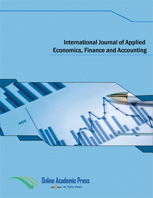Impact analysis of bilateral trade openness and income inequality based on the system GMM method: A case study of transnational dynamic panel data
DOI:
https://doi.org/10.33094/ijaefa.v18i2.1479Keywords:
Bilateral trade openness, GMM analysis, Human resources, Income inequality, Labor proficiency.Abstract
To analyze the impact of bilateral trade openness on income inequality, the study selected 16 countries with the highest global import and export trade rankings as research subjects, combined with cross-border dynamic panel data from 2005 to 2020, and used the Gaussian Mixture Model (GMM) to analyze the dynamic impact of natural and policy factors on domestic income inequality in the process of deepening bilateral trade openness. Empirical research has found that the policy-oriented expansion of openness in 16 countries has an inhibitory effect on domestic income inequality, while natural openness is influenced, to varying degrees, by different trading partners. High-quality education and sound infrastructure can help regulate income inequality. The results indicate that policy-based openness between 16 countries and those with weaker technological output, i.e., patent quantity, education level, i.e., higher education, and immigration, can suppress domestic income inequality, which is consistent with the expected hypothesis of the impact mechanism. The results indicate that in-depth research on the relationship between trade openness and income inequality can provide a basis for policymakers to adjust trade policies and provide recommendations to reduce income inequality. Meanwhile, the results and methods of this study can provide references for other scholars and promote research progress in related fields.
Downloads
Published
Issue
Section

This work is licensed under a Creative Commons Attribution-NonCommercial 4.0 International License.




